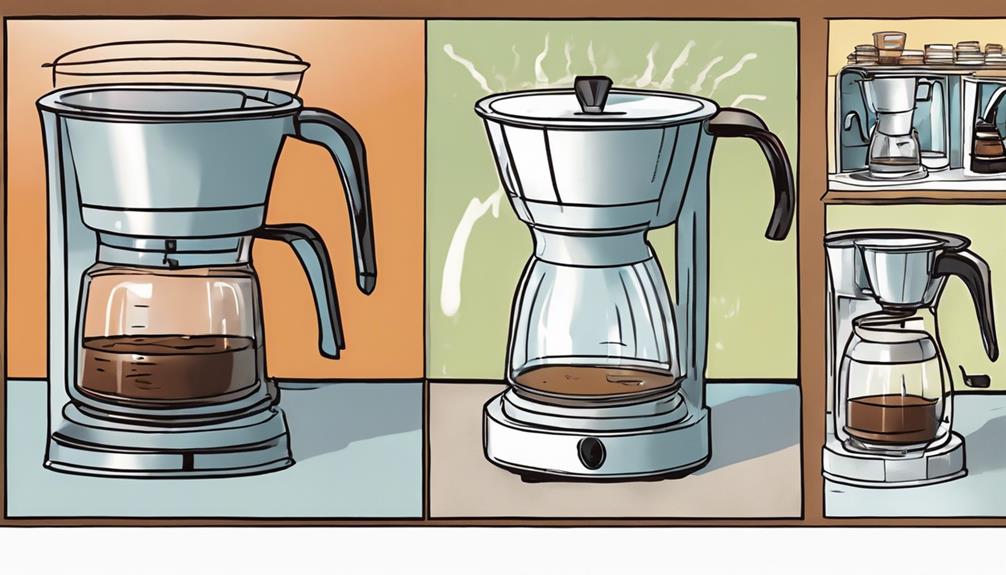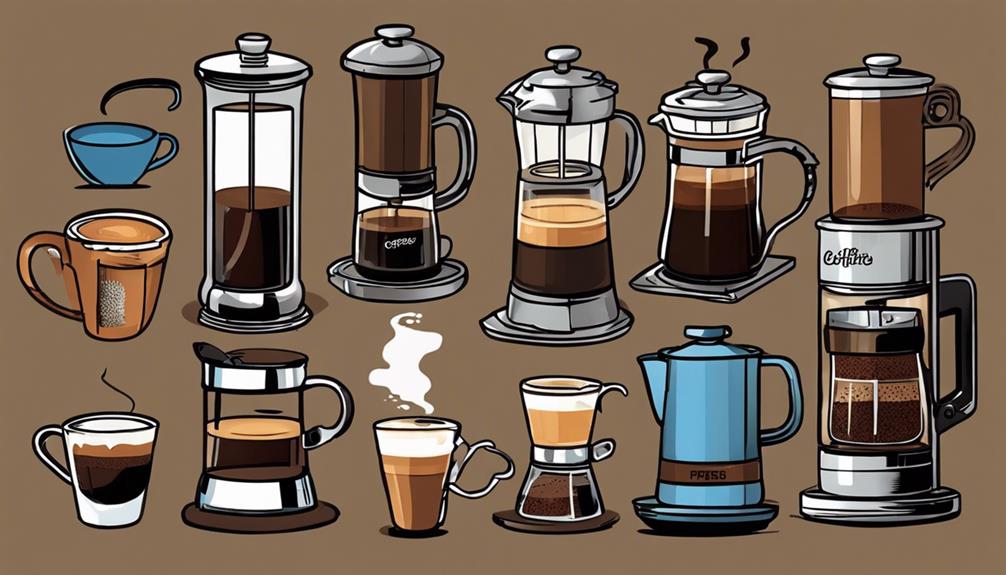Are you ready to hit the road with your coffee trailer? Before you do, make sure to familiarize yourself with local vending laws and ensure that your kitchen is licensed. Secure the necessary permits and understand the equipment requirements. Research your market, outshine your competition, and come up with a unique concept. Customize your menu, focus on health, and prioritize eco-friendly practices. Invest in top-notch equipment for a smooth operation. Keep your menu customer-friendly, stay organized, and make exceptional service a priority. Be adaptable to market changes and strategize your offerings. Collaborate with local roasters, consider roasting your own beans, and partner with bakeries. Prepare for a successful coffee trailer business that’s always on the go!
Key Takeaways
- Choose a mobile coffee trailer design that suits your brand and offers functionality.
- Equip the trailer with a commercial-grade espresso machine, grinder, and other essentials.
- Secure necessary permits and licenses for mobile food service operations.
- Focus on eco-friendly practices and sustainable sourcing for a competitive edge.
- Design a menu that caters to your target market’s tastes and preferences.
Legal Requirements and Compliance
To guarantee legality and compliance while operating a mobile coffee trailer, thorough understanding of your city’s street vending regulations is necessary. Check the commissary requirements to confirm you operate from a licensed kitchen, meeting health and safety standards.
Obtain the necessary business licenses and permits to run the mobile coffee trailer legally. Familiarize yourself with the equipment specifications and hygiene policies needed to adhere to regulations.
Additionally, make sure you understand product handling, storage, and preparation guidelines to maintain compliance with legal requirements. By following these guidelines, you can ensure that your mobile coffee trailer operates within the bounds of the law, providing a safe and hygienic environment for both you and your customers.
Research and Business Strategy Development

Conduct thorough market research to gain insights into customer preferences, behaviors, and competition within the mobile coffee trailer industry.
When delving into the mobile coffee business, understanding your target market demographics and the nuances of customer preferences is key.
Here are some essential steps to guide your research and business strategy development:
- Analyze market trends to anticipate shifts in consumer behavior and preferences.
- Identify your competition to differentiate your offerings and create a competitive edge.
- Tailor your business strategy to align with customer choices and evolving market demands.
- Develop a robust marketing strategy that effectively communicates your unique value proposition to your target audience.
Starting a Coffee Trailer Successfully

Analyzing the market trends and competition sets the foundation for launching a successful coffee trailer business, ensuring you differentiate your offerings and cater to evolving customer demands effectively. When starting a coffee trailer, consider the unique concept you want to bring to the market. Tailoring your menu options to match target market preferences and emphasizing health and eco-friendliness can set you apart and attract a loyal customer base. Additionally, investing in the right coffee trailer equipment is crucial for smooth operations on the go. The mobile coffee business model offers flexibility and can be a profitable venture with lower startup costs compared to traditional coffee shops. By focusing on quality, convenience, and innovation, you can establish a successful coffee trailer business that resonates with customers and keeps them coming back for more.
| Key Factors | Description |
|---|---|
| Unique Concept | Differentiate your offerings to stand out in the market. |
| Target Market Preferences | Tailor your menu and services to cater to customer preferences. |
| Health and Eco-friendliness | Emphasize these aspects to attract customers who value sustainability and well-being. |
Managing Your Coffee Trailer Operations

Effective management of your coffee trailer operations hinges on the strategic development and execution of your menu offerings.
When it comes to managing your coffee trailer operations, consider the following:
- Menu Development: Tailor your menu to meet customer expectations and maximize sales potential.
- Managing Operations: Guarantee seamless operations by organizing tasks efficiently and optimizing workflow.
- Customer Satisfaction: Prioritize customer experience through friendly service and high-quality products.
- Market Conditions: Stay adaptable to evolving market trends to maintain profitability and meet customer demands.
Sourcing Suppliers and Vendors

When sourcing suppliers and vendors for your coffee trailer, prioritize establishing partnerships with local wholesale coffee roasters or consider roasting your beans to guarantee quality coffee for your customers.
The choice of suppliers plays an essential role in ensuring product quality and ultimately customer satisfaction.
Explore partnerships with bakeries to provide food items that complement your coffee offerings. Additionally, make sure that your vendors can supply pre-packaged goods if needed for your coffee trailer business.
Don’t overlook the importance of suppliers for paper supplies, condiments, and syrups to keep your coffee trailer well-stocked and ready for business.
Remember, the vendors you select directly impact the overall quality of your products and the satisfaction of your customers.
Frequently Asked Questions
Is a Coffee Trailer Profitable?
Yes, a coffee trailer can be profitable for you. With lower overhead costs, flexibility in location, and rising trends in mobile businesses, there is potential for annual revenue ranging from $50,000 to $250,000.
Can You Make Money From a Coffee Van?
Absolutely, you can make money from a coffee van! It’s like having a portable coffee shop on wheels, offering convenience and flexibility. With lower costs and catering options, you have the potential to earn a solid income.
How Much Money to Start a Coffee Stand?
To start a coffee stand, you’ll need around $7,500 to $15,000 for a mobile cart. Costs can vary based on setup. Keep operational expenses in mind. Profit potential hinges on location, marketing, and clientele.
How to Get a Pitch for a Coffee Van?
To get a pitch for your coffee van, research local regulations, contact event organizers, and join mobile catering associations. Negotiate terms, fees, and logistics. Utilize online platforms connecting vendors with pitches. Be proactive and persistent.
Conclusion
To wrap up, starting a coffee trailer can be a profitable and exciting venture. Did you know that the mobile food industry is expected to reach $3.7 billion by 2023?
By following the legal requirements, researching your market, and effectively managing your operations, you can build a successful coffee trailer business on wheels. By obtaining all necessary permits and licenses, you can ensure that your mobile coffee truck business is operating within the law. Researching your market will help you understand the demand for coffee in different locations and events, allowing you to strategically position your business for maximum success. Additionally, effectively managing your operations, such as maintaining high-quality coffee products and providing excellent customer service, will help you build a loyal customer base and grow your business.
So, grab your coffee beans and hit the road to caffeinate and captivate your customers!









